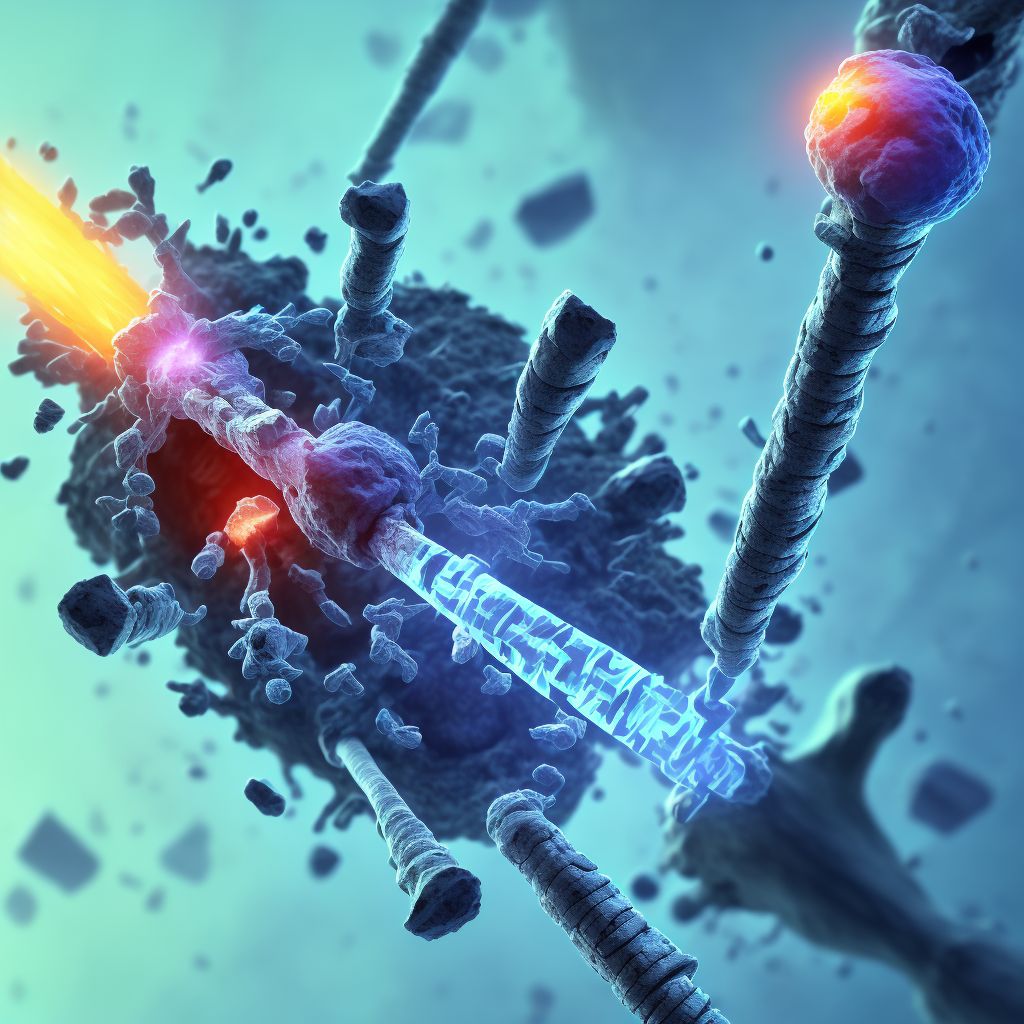
Unspecified fracture of shaft of right tibia, subsequent encounter for open fracture type I or II with malunion Save
ICD-10 code: S82.201Q
Disease category: S82.201: Unspecified fracture of shaft of right tibia
Unspecified Fracture of Shaft of Right Tibia: Understanding the Subsequent Encounter for Open Fracture Type I or II with Malunion
Fractures can occur in various bones of the body, leading to significant discomfort and functional limitations. One such type of fracture is an unspecified fracture of the shaft of the right tibia. This article aims to provide insight into the subsequent encounter for open fracture type I or II with malunion, without focusing on treatment options.
When an unspecified fracture of the shaft of the right tibia occurs, it is crucial to understand the subsequent encounter for open fracture type I or II with malunion. This type of fracture involves an open wound, which can increase the risk of infection and complications during the healing process.
To better comprehend this condition, it is essential to understand the classification of fractures. Type I open fractures are those with a clean wound, while type II fractures have a larger wound with moderate contamination. Malunion refers to the improper healing of the fracture, resulting in an abnormal alignment of the bones.
- Causes: Unspecified fractures of the shaft of the right tibia can occur due to various reasons, including falls, accidents, sports injuries, or direct trauma to the leg. These fractures can lead to open wounds, making them susceptible to infection.
- Symptoms: Common symptoms of this condition include pain, swelling, tenderness, deformity, inability to bear weight, and difficulty walking. These symptoms may intensify if malunion occurs, as it can affect the overall alignment and stability of the leg.
- Diagnosis: To diagnose an unspecified fracture of the shaft of the right tibia with subsequent open fracture type I or II with malunion, a thorough physical examination, medical history review, and imaging tests such as X-rays or CT scans may be conducted.
- Complications: If left untreated, open fractures of the tibia can lead to severe complications such as infection, delayed healing, nonunion (failure of the bone to heal), or malunion. These complications may require additional medical interventions or surgical procedures.
It is important to note that the information provided here is for educational purposes only and should not be considered as medical advice. If you suspect an unspecified fracture of the shaft of the right tibia with subsequent open fracture type I or II with malunion, consult a healthcare professional for an accurate diagnosis and appropriate treatment options.
Overall, understanding the subsequent encounter for open fracture type I or II with malunion is crucial in managing this specific type of fracture. By seeking timely medical attention and adhering to the recommended treatment plan, individuals can improve their chances of a successful recovery.
Treatment of Unspecified fracture of shaft of right tibia, subsequent encounter for open fracture type I or II with malunion:
Treatment Options for Unspecified Fracture of Shaft of Right Tibia
An unspecified fracture of the shaft of the right tibia, subsequent encounter for open fracture type I or II with malunion, can be a challenging condition to treat. However, there are several treatment options available that can help alleviate symptoms and promote healing.